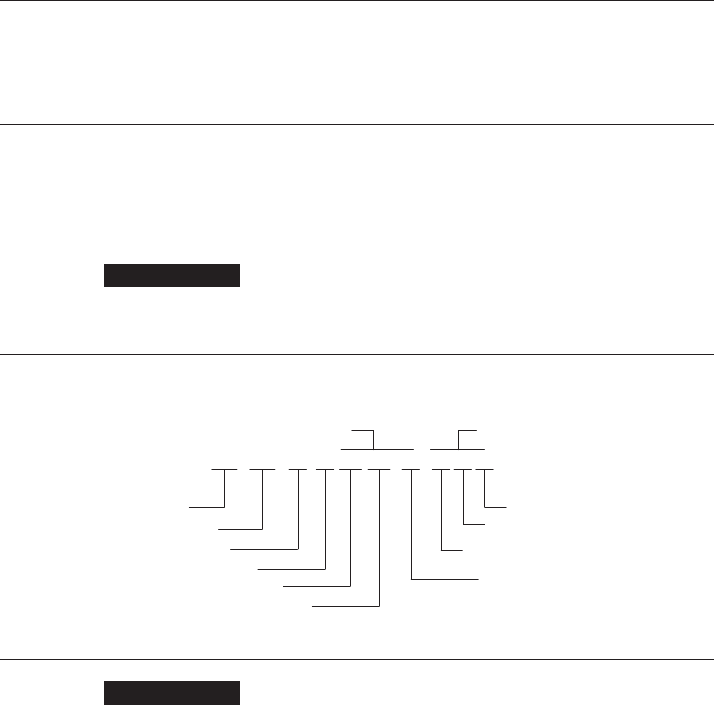
2 03524832_ed13
Product Safety Information
Intended Use:
The 150BMG Series Air starters are intended for use in starting reciprocating internal combustion engines. These starters are designed
to be operated from a remote location after proper installation on the engine requiring starting.
For Additional information refer to Air Starters Product Safety Information Manual Form 45558624.
Manuals can be downloaded from www.ingersollrandproducts.com
Lubrication
Ingersoll Rand strongly emphasizes the importance of proper
lubrication for achieving top performance and maximum durability
with this starter. Either one of two lubrication systems is
recommended.
For typical starter installations where the cranking cycle is less than
10 seconds, we recommend an Ingersoll Rand No. HDL3 Lubricator
installed as shown in Dwg. TPC585. Use either diesel fuel or 10W
nondetergent motor oil for lubricating the starter.
NOTICE
When an HDL3 Lubricator is used, make certain that the oil sup-
ply line pressure is no greater than 5 psi. If there is pressure on
the line, the lubricator will continuously leak lubricant through
the starter and out of the exhaust.
If the cranking cycle is more than 10 seconds, we recommend the
Ingersoll Rand No. Lubricator NL-24-8 installed in the main air
supply line. Use a good quality 10W nondetergent oil and adjust the
lubricator to ow 1 to 3 drops per second.
Placing the Starter in Service
How to Order a Starter
Size Starter
Type Starter
Gas Sealed
Gearing
Drive
Drive Housing
Inlet
Type Pinion
Exhaust
Drive Housing
150
0 2 06- RH 21 EGBM
Rotation
Orientation Code
MODEL CODING
(Dwg. TPD1732)
For specic models or special applications, contact your nearest Ingersoll-Rand Distributor or Ingersoll-Rand Engine Starting Systems,
Box 8000, Southern Pines, NC 28387 (910) 692-8700.
Installation
NOTICE
For maximum performance, read this manual prior to
installation or operation of Series 150BMG Starters.
General Information
1. This starter must be installed according to the instructions in this
manual.
2. Ingersoll-Rand recommends that on all vehicular installations and
on stationary engines subject to vibration, hoses of the specified
diameter be used instead of rigid pipe connections. Vehicle and
engine vibration will soon loosen rigid pipe connections, whereas
hoses will absorb the vibration, and connections will remain
tight.
3. When mounting a starter, make the hose connections at the
receiver and have the starter end of the hose handy for attaching
to the starter. Wherever possible, attach the air hoses to the
starter before mounting the starter on the flywheel housing.
There are two reasons for following this procedure:
a. After mounting the starter, it is often impossible to make hose
connections due to space limitations.
b. Once attached, the hoses carry some of the weight of the
starter, making it easier to complete the mounting.
4. Engine design often demands that the starter be mounted
underneath in extremely close quarters. Therefore, even though
two of the mounting bolt holes are easy to get at, the third
one is often difficult to reach. The tools usually needed in the
installation of a starter are a regular ratchet wrench, sockets,
universal joint, socket extension and a single or double-end
ratcheting box wrench.
5. The efficiency of a starter can be greatly impaired by an improper
hook-up. Hoses smaller than those recommended will reduce the
volume of air to the motor, and the use of reducers in the exhaust
port will restrict the exhaust and choke the motor. The use of tees
and elbows and the length of the supply line should be kept to
a minimum. In normal installations, hoses running from the air
tank to the starter should be No. 20 and fittings should be 1-1/4”.
Control hoses should be No. 4 and fittings should be 1/4”.
6. A leak in any of the connections means that the system will drain
overnight and will have to be repressurized the next morning
by using another vehicle or compressor. Make the connections
right the first time to avoid unnecessary costs and delays. On all
threaded connections throughout the system, use Ingersoll-Randuse Ingersoll-Rand
No. SMB-441 Sealant, non-hardening No.2 Permatex,
Loctite®* Pipe Sealant or Perma-Lok® LH050**. Always run the air
supply line from the side or top of the receiver, never at or near
the bottom.


















